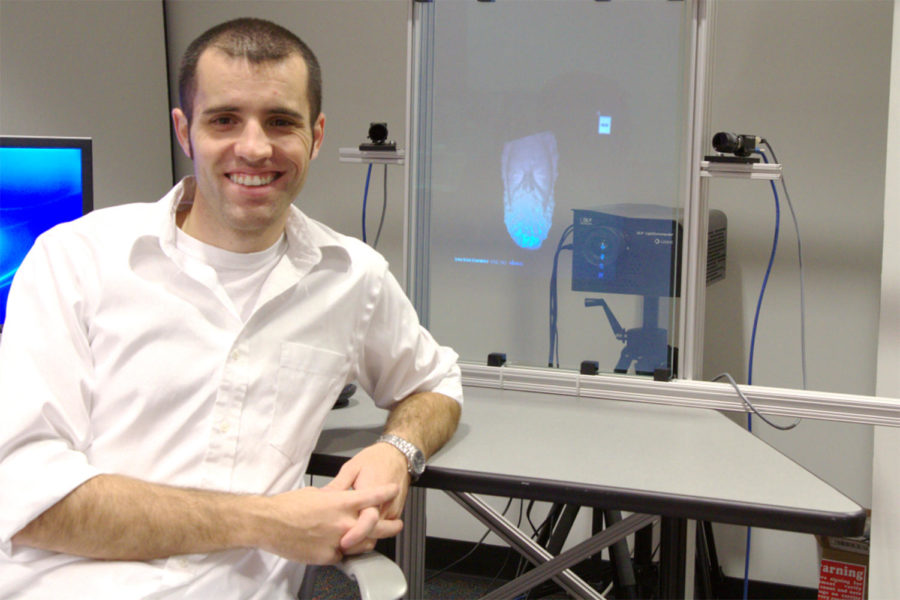Researchers develop 3-D teleconferencing technology
Courtesy of Nikolaus Karpinsky
Nikolaus Karpinsky, graduate research assistant, explains how his 3-D teleconferencing system works.
November 13, 2013
Researchers at Iowa State are developing new 3-D teleconferencing technology.
When Nikolaus Karpinsky, Ph.D. student in human computer interaction, joined with Song Zhang, professor of mechanical engineering, in 2009, they looked for a way to apply the 3-D technology.
What this technology looks like now is an object with two 3-D scanners. Anything placed in front of the scanner gets scanned. After the scan, the video is compressed, streamed across the network and displayed at a different location.
This concept is called telepresence.
“We can 3-D scan someone in one place and transmit them across the network and display them somewhere else,” Karpinsky said.
Aside from making eye contact possible, the technology also allows people to see gestures and objects in 3-D models.
This technology will be useful in many fields, especially in research fields such as engineering and medicine said Zhang.
For example, in the medical field it could be used to help robots in the surgery room so that the surgeon can actually operate from a different location Zhang stated.
“It’s going to be a big deal to change our lives,” Zhang said.
One of the biggest challenges that the researchers have had to overcome was compression issues. They needed to make the technology work on regular computers.
“We found a way to compress the geometry so it’s basically like the size of a YouTube video,” Karpinsky said.
At some point, they hope to have this technology available for smartphones, but every thing takes time.
“Nowadays, you can play the [YouTube] video on your phone, but five or six years ago you couldn’t do it,” Zhang said.
The hardware used now is already small in comparison to what it would have been just a few years ago. But it has to be even smaller to be compatible for smartphones.
“I think we have an opportunity to make it really small, since now, smartphones can do all the computation,” Zhang said.
At this point, their research focuses on engineers and how they can help engineers do their jobs better with these scanners, Karpinsky said.
There will have to be some adjustments made to technology before this sort of thing can be supported on mobile devices.
First, the hardware must be very small, but phones also need to undergo some changes to support it. Especially the display, since the computer display is much better than a phone display.
They hope to be able to make and implement some of these changes in the next three to five years Zhang stated.
All of this technology is new: Only nine months ago was this technology simply an idea.
“We are just getting started. There’s not a lot done yet,” Zhang said. “We have a lot of potential to further improve the technology.”
Since it is just at its beginning stages, it will still be years before people can expect to have this sort of technology in their hands.
“It’s still research. It’s not ready for commercialization yet,” Karpinsky said.

















